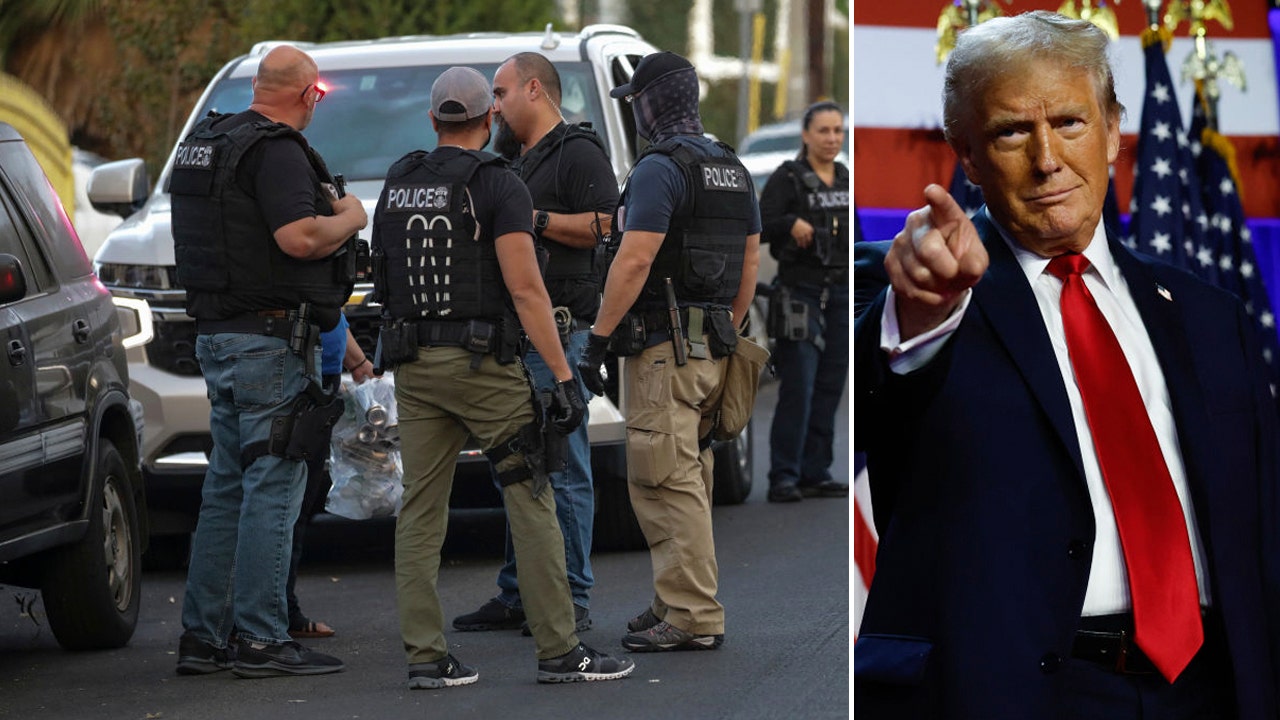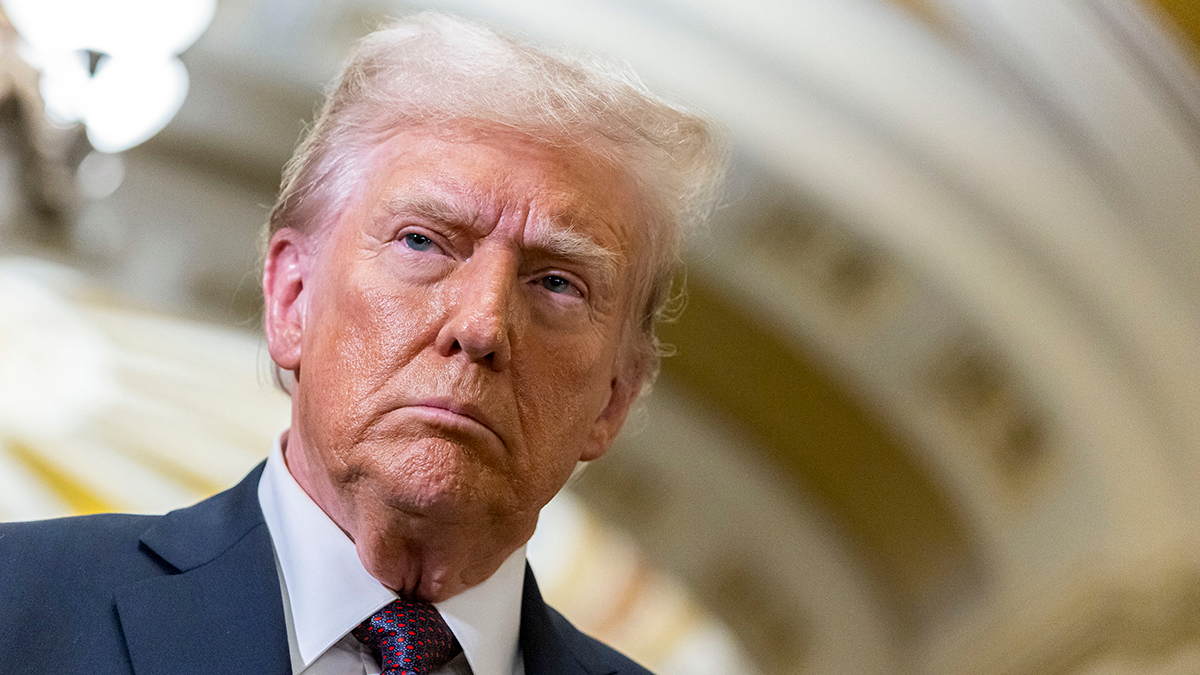Minnesota
Bronny James health update: LeBron James and son spotted in Minnesota for further medical treatment

NBA legend LeBron James and his eldest son Bronny are in Minnesota for further treatment weeks after the 18-year-old suffered a cardiac arrest on a basketball court at the University of Southern California (USC). According to TMZ Sports, LeBron and Bronny reached the Mayo Clinic in Rochester over the weekend. The report claimed that LeBron and his son, along with some friends, also visited the Terza Ristorante for dinner earlier on Monday.
In a video, Bronny can be seen sporting a white shirt and black jacket while exiting the restaurant. LeBron and Bronny were mobbed by fans just before getting into an SUV.
Bronny, 18, was rushed to Cedars-Sinai Medical Center after suffering a cardiac arrest during a training session at the USC on July 24. According to TMZ, Bronny was unconscious before being rushed to hospital following the cardiac incident.
Bronny James was admitted to the Intensive Care Unit (ICU). Following treatment, he was released from the hospital on July 27. “Thanks to the swift and effective response by the USC athletics’ medical staff, Bronny James was successfully treated for a sudden cardiac arrest. He arrived at Cedars-Sinai Medical Center fully conscious, neurologically intact and stable. Mr. James was cared for promptly by highly-trained staff and has been discharged home, where he is resting,” read a statement by the hospital.
Bronny James is currently a freshman at the USC, where he plays for the Trojans basketball team. The Trojans are right now in Greece preparing for multiple exhibition games scheduled to take place later this month. There is still no clarity on Bronny’s future on the court and many reports suggested that the youngster could postpone his first semester at USC. But refuting all those speculations, a spokesperson for James’ family told Daily Mail, “There is no truth to any report suggesting Bronny is considering delaying the start of his first semester of college.”
Before joining the Trojans basketball team, Bronny James was a part of Sierra Canyon High School in Los Angeles. Bronny finished his superb senior year campaign at the Sierra Canyon school having registered 15 points in an all-star game.
Bronny James had announced his commitment to the Trojans earlier this year in May. A couple of days later, the USC officially announced the signing of Bronny. Rated as a four-star recruit, Bronny is seen by many as a future NBA star. The talented teenager will be eligible for the NBA Draft after spending one season with the Trojans.

Minnesota
Minnesota Frost beaten by Montreal Victoire to a 4-2

The Minnesota Frost suffered their first road regulation loss of the season Friday night at the hands of the Montreal Victoire with a final score of 4-2.
Victoire forward Abby Boreen scored twice in Friday’s matchup.
Claire Dalton and captain Marie-Philip Poulin, on a five-on-three power play, also scored for Montreal, playing its first home game since Dec. 30.
Montreal’s Ann-Renée Desbiens made 21 saves.
Kendall Coyne Schofield and Claire Thompson scored for the Frost. Minnesota had won its first three games away from home, before dropping a 3-2 shootout decision on Wednesday to the New York Sirens.
Nicole Hensley stopped 20 shots for the Frost.
The win moved Montreal one point back of Minnesota for first in the PWHL standings, with the Victoire holding two games in hand. The Frost beat the Victoire 4-2 on Sunday in Denver as part of the PWHL’s Takeover Tour.
The Victoire were without forward Laura Stacey, who is listed as day-to-day after suffering an injury last weekend.
Montreal scored two power-play goals in the same game for the first time since Nov. 30.
Minnesota leads the PWHL in total goals with 36 but could only beat Desbiens twice.
Boreen, playing top-line minutes in place of the injured Stacey, took a cross-ice pass from linemate Jennifer Gardiner to open the scoring for Montreal about eight minutes into the first period.
Poulin has recorded at least one point in all three games she has played against Minnesota this season. The Victoire captain has scored three goals and collected three assists in a four-game point streak against the Frost dating to last season, her longest such stretch against any opponent in her PWHL career.
The Frost host the Charge on Tuesday.
Minnesota
Dome home in northern Minnesota is energy-efficient, weather-resistant — and listed at $449,000

The company has sold more than 1,500 homes around the world and nearly 300 in Minnesota, Hill said.
“The growing demand for durable homes in the face of climate change has contributed to [domes’] rise in popularity,” she said. They can even withstand tornadoes.
The Kittermans’ home’s exterior walls contain 16 inches of fiberglass insulation and 2 inches of airspace. A vent system between the insulation and plywood sheathing prevents water condensation, Rick Kitterman said. Vertical exterior walls have vinyl siding; the exterior of the dome and entryway are architectural shingles.
The interior drywall is paneled with tongue-and-groove pine or painted shades of green to reflect the woods visible through the windows.
Inside walls on the main and upper levels are not load-bearing, making room arrangements completely flexible. “If a person wanted to, on the main floor all the way to [the] loft, they could remove everything inside and start over and rebuild all the rooms,” Kitterman said. The round shape makes furniture arrangements flexible, too.
The owners’ suite in the second-floor loft is separated from the living room by a half-wall. Stairs lead to a five-sided cupola atop the half-sphere. The other two bedrooms — one on the main floor and one on the lower level — have full walls. All three bedrooms are accompanied by bathrooms. The owners’ suite has a large walk-in closet.
Minnesota
After stunner at Minnesota, Michigan has 4 losses by a combined 8 points

Michigan was denied a second overtime in Minneapolis when Dawson Garcia sunk a buzzer-beating shot from just inside half court. The Wolverines had their chances to make sure a shot like that didn’t matter.
But some recurring issues (plus a new one) doomed Michigan in Thursday night’s 84-81 loss to last-place Minnesota.
“We had said it coming in: ‘You can’t overlook anybody in this league,’” Michigan forward Will Tschetter said on the postgame radio show. “We obviously overlooked them tonight.”
‘Uncharacteristic’ offensive performance
The Wolverines entered the game leading the country in 2-point shooting at 63 percent. They shot just 17 of 40 (43 percent) inside the arc against Minnesota, with the figure even worse when considering only shots labeled in the box score as dunks or layups.
“Credit Minnesota; I thought they played with physicality,” Michigan coach Dusty May said on the radio. “I thought they put bodies on us. They collapsed on a lot of those drives. One of the reasons we’ve played so well at the rim is because when (teams) do collapse we’ve made the next pass and the next play, and tonight we challenged multiple bodies at the rim several times. That was just uncharacteristic of us.”
Several Wolverines missed shots at the basket they usually make. Starting center Vladislav Goldin entered the game with the top field-goal percentage among Big Ten players (63 percent). He made just 5 of 15 shots.
“Vlad’s played in a lot of basketball games and I’m just gonna chalk this up to (it) just wasn’t his night,” May said. “I thought he had several good looks that just didn’t drop. And on the nights when the ball is just not dropping, you can’t give up the offensive rebounds and you can’t turn it over. You just can’t do all those in the same game.”
Another close loss
Thursday’s three-point defeat was Michigan’s most lopsided loss of the season. Michigan’s four losses have come by a combined eight points.
Mistakes are magnified in games like that. Turnovers have been a problem for Michigan most of the season. Michigan’s total on Thursday (13) wasn’t egregious, but a sloppy start “set the tone” for the game, May said.
Midway through overtime, after Danny Wolf had set up Goldin for dunks on two straight possessions, something went awry on Tre Donaldson’s pass to Nimari Burnett, and the ball ricocheted out of bounds.
Michigan’s rebounding was also fine overall but not good enough in May’s eyes. The Golden Gophers grabbed 16 offensive rebounds, including one they had no business getting that led to a 3 to open the overtime scoring.
“Our defense, our ability to rebound the basketball when it really mattered was I think ultimately the difference,” May said.
Though more of a gut punch in the moment, close losses are a better sign for a team than blowout losses. And it’s not like the Wolverines haven’t been able to win any close games. They beat Wisconsin and Iowa by two points each, and trailed USC and UCLA in the second half before pulling away.
The bigger issue is that the Wolverines have blown double-digit leads in all four losses. They were up 10 with 12:50 to go on Thursday. They led Oklahoma by 11 in the second half, and held 13- and 15-point first-half leads over Wake Forest and Arkansas, respectively.
Michigan’s inability to put away Thursday’s game was especially surprising since Minnesota was 0-6 in the Big Ten.
Impressive homecoming
Though he didn’t sound thrilled to talk about it, Tschetter played well for Michigan in a homecoming game. The redshirt junior scored 15 points in 23 minutes off the bench. He made three 3-pointers and had 11 points in the first half.
“He’s consistent with his effort and energy,” May said. “(He) made some big shots. I thought he was poised around the rim. I thought he was a real bright spot.”
Tschetter is from Stewartville, a small town about 100 miles south of Minneapolis. The TV broadcast noted he had about 100 family members and friends inside Williams Arena on Thursday.
“Obviously it’s great to be able to come home and play in front of people that have grown up watching me,” Tschetter said. “But obviously ridiculously disappointed with a few things I did myself, the team, and just the overall game.
“We’ve just got to get back to the fundamentals of who we are, how we’ve won games in the past. Got to get back to being unselfish, rebounding the freakin’ basketball and just things like that.”
Michigan (13-4, 5-1) hosts Northwestern (11-6, 2-4) on Sunday. The Wildcats won on Thursday (at Maryland) on an overtime buzzer-beater.
- BETTING: Check out our guide to the best Michigan sportsbooks, where our team of sports betting experts has reviewed the experience, payout speed, parlay options and quality of odds for multiple sportsbooks.
-
/cdn.vox-cdn.com/uploads/chorus_asset/file/25822586/STK169_ZUCKERBERG_MAGA_STKS491_CVIRGINIA_A.jpg)
/cdn.vox-cdn.com/uploads/chorus_asset/file/25822586/STK169_ZUCKERBERG_MAGA_STKS491_CVIRGINIA_A.jpg) Technology1 week ago
Technology1 week agoMeta is highlighting a splintering global approach to online speech
-

 Science7 days ago
Science7 days agoMetro will offer free rides in L.A. through Sunday due to fires
-
/cdn.vox-cdn.com/uploads/chorus_asset/file/23935558/acastro_STK103__01.jpg)
/cdn.vox-cdn.com/uploads/chorus_asset/file/23935558/acastro_STK103__01.jpg) Technology6 days ago
Technology6 days agoAmazon Prime will shut down its clothing try-on program
-

 News1 week ago
News1 week agoMapping the Damage From the Palisades Fire
-

 News1 week ago
News1 week agoMourners Defy Subfreezing Temperatures to Honor Jimmy Carter at the Capitol
-
/cdn.vox-cdn.com/uploads/chorus_asset/file/25826211/lorealcellbioprint.jpg)
/cdn.vox-cdn.com/uploads/chorus_asset/file/25826211/lorealcellbioprint.jpg) Technology6 days ago
Technology6 days agoL’Oréal’s new skincare gadget told me I should try retinol
-
/cdn.vox-cdn.com/uploads/chorus_asset/file/25832751/2192581677.jpg)
/cdn.vox-cdn.com/uploads/chorus_asset/file/25832751/2192581677.jpg) Technology2 days ago
Technology2 days agoSuper Bowl LIX will stream for free on Tubi
-

 Business4 days ago
Business4 days agoWhy TikTok Users Are Downloading ‘Red Note,’ the Chinese App





















